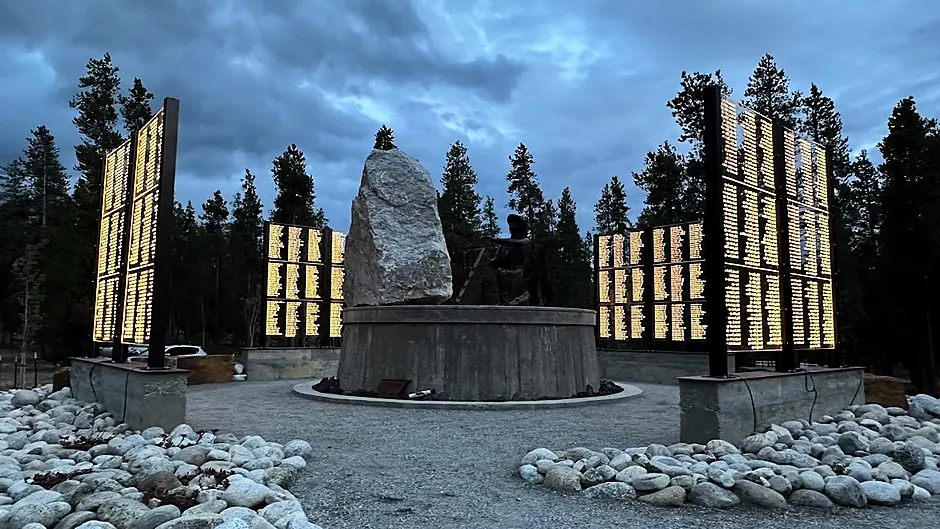AN Irish American professor who instigated a memorial to honour more than 1,000 immigrants from the Beara peninsula who lie in unmarked graves in Colorado, will give a talk in Skibbereen this Saturday (June 8th).
Professor Jim Walsh will tell the fascinating story behind the memorial unveiled last year at the West Cork Art Centre alongside Kilbrittain-based artist Helle Helsner, whose current work explores the lives of the women of the 19th and 20th century mining community of Allihies.
Allihies has well established links with Butte, Montana, with many Beara men emigrating there to seek work when the copper mines in Allihies closed. However, it was only in the last decade that it was discovered that many first went to Leadville to work in the area’s silver mines.
Leadville is over 10,000ft above sea level, which led to gruelling working conditions for miners, resulting in high death rates. The average age of many of the Beara men who died there was only 23.
The initiative to memorialise the men was instigated by Prof Walsh from the University of Colorado, who estimated that in the 1800s, two out of every five people living in Leadville came from the Beara Peninsula.
‘My interest in this was born out of my interest in my own Irish roots,’ he told The Southern Star.
‘I trace over half of my ancestry to the Great Hunger in Ireland, something like 13 branches of my family showed up in North America from the west coast of Ireland during the Famine. I was researching this history with my uncle at the same time that I began my PhD work. It had a profound impact on me. My parents were never able to tell us anything about our roots, as their parents didn’t pass the history down to them. It was repressed trauma.
‘I learned that two of my great grandparents were killed by trains, and a third was injured severely. I found desperation, poverty, mental illness, suicide, transience. They worked dangerous jobs. Just as I was learning all of this, I had to choose a dissertation topic for my PhD. I decided to research the Irish immigrant community in 19th century Leadville and began to find a similar story of dangerous work, struggle, poverty, and transience.
‘During the early years of that research, a close friend brought me to the pauper section of Evergreen Cemetery. It took me a few minutes to realise the sunken holes in a pine forest were the graves of poor and desperate people, the same people I had been researching. In that moment, I felt a responsibility to tell their stories. It almost felt like I adopted them, and I continue to feel connected to those graves and to that community.
‘It all began with the simple act of learning who I am. The history of the Great Hunger has been hidden and hushed. The memorial offers us an opportunity to heal.’
Prof Walsh will talk about the history of Leadville’s Irish community, the important connection to West Cork, his deep personal attachment to this topic, and the story behind the Leadville Irish Memorial, on Saturday.
‘I will also relate this 19th century story to the 21st century, highlighting how the memorial speaks to important themes today around immigration, labour, transience, homelessness, and why history is more about the living than it is about the dead. The memorial has a larger purpose related to the dignity and human rights of migrants and refugees everywhere, as well as the rights of workers.’
Helle, who is originally from Denmark, but who has lived in Ireland for 30 years, is a full-time lecturer at Crawford Art College and a bronze caster by trade.
She is currently undertaking a PhD investigating materiality, landscape and social politics in connection with material extraction, with the research based on the Beara peninsula/Allihies copper mines, and she travelled for the unveiling of the memorial, which she describes as ‘hugely emotional’.
‘By giving a voice to the women of Allihies, I hope to give voice to the landscape itself and bring awareness to the impact we have as humans in our material use,’ she said.
The talk will be followed by an invitation to visit Helle’s studio at the Still Mill, Skibbereen, to see an exhibition of her research practice and artwork.
Meanwhile, this will be Prof Walsh’s third time in Allihies.
‘In 2019, I flew to Dublin with my bicycle and cycled to Allihies to share the news of my research and the connection to West Cork with the people there. I received a great welcome and three years later, Leadville and Allihies were twinned. I feel at home in Allihies,’ he said.









